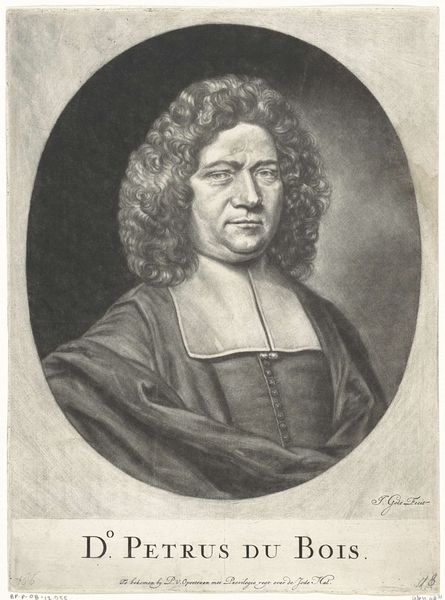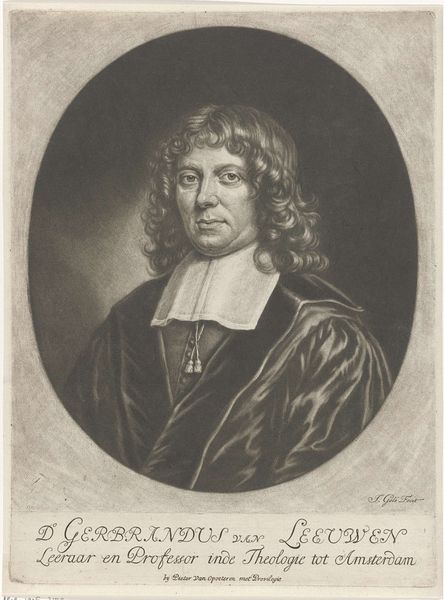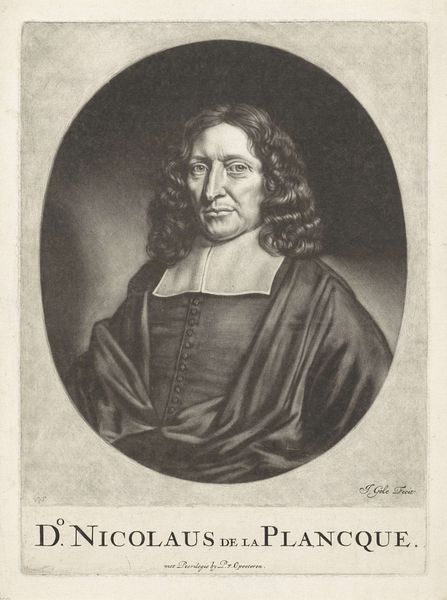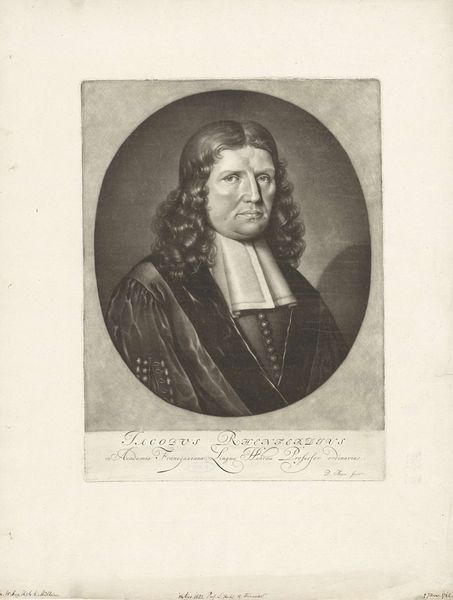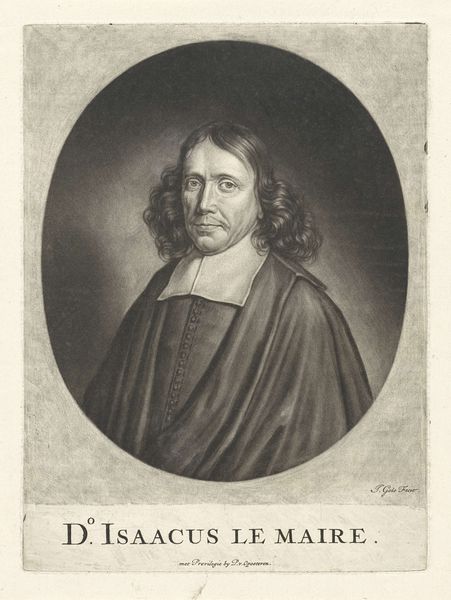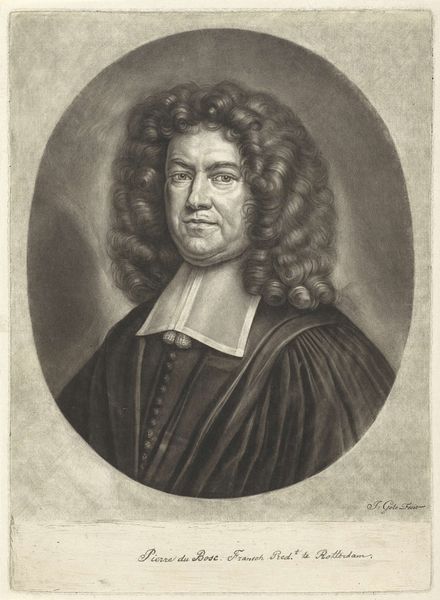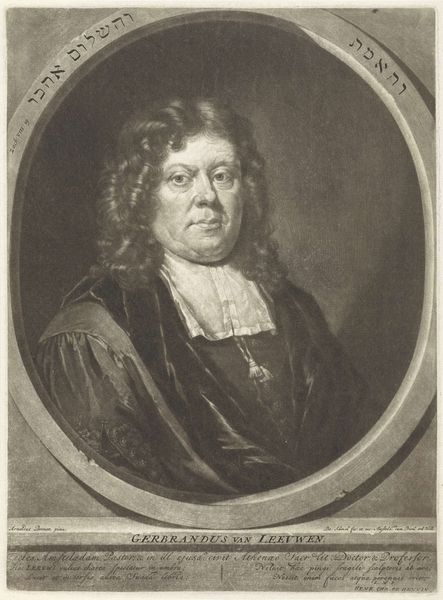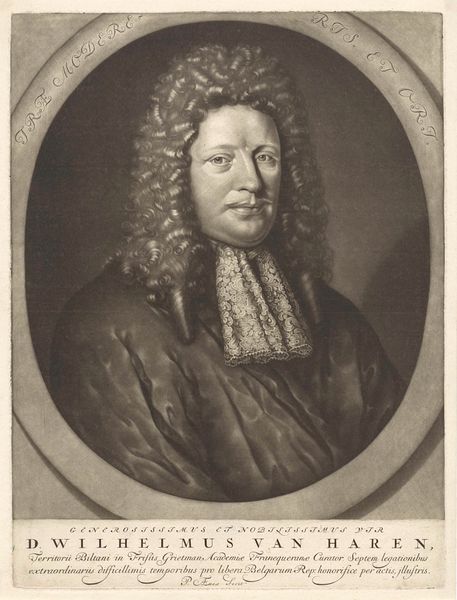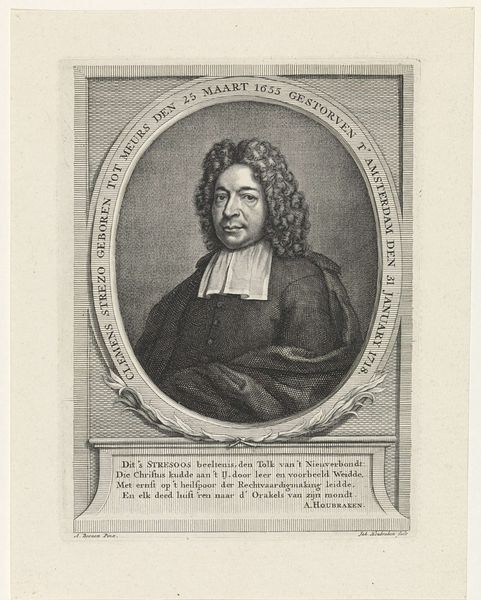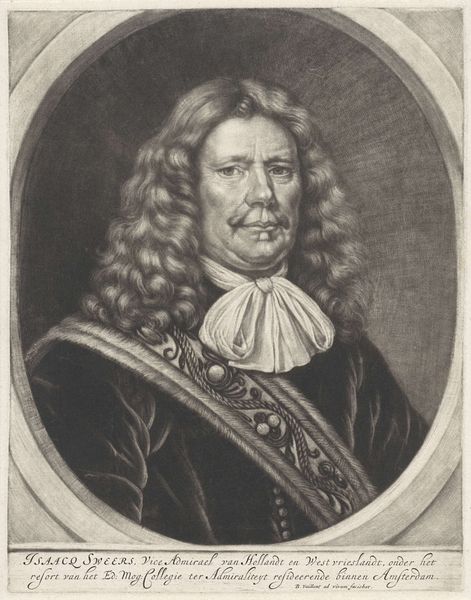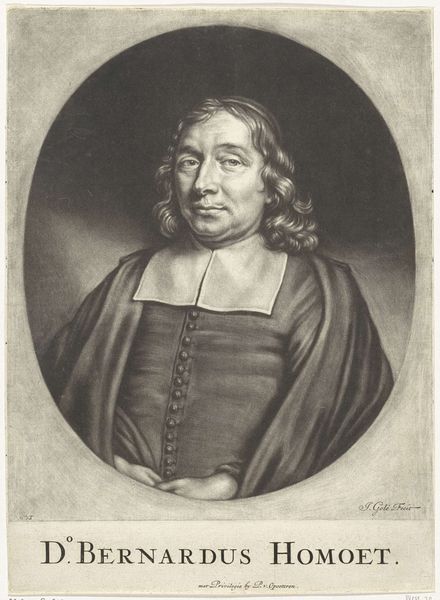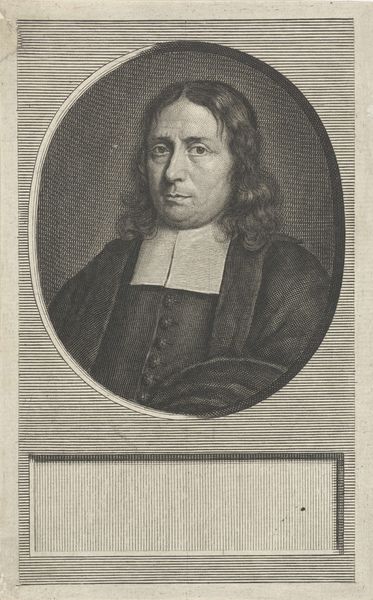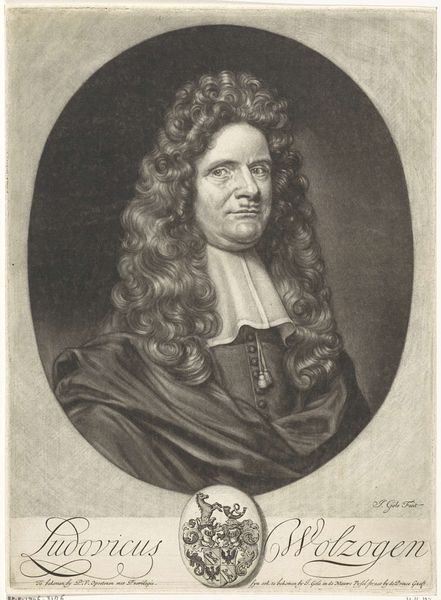
print, engraving
#
portrait
#
baroque
#
dutch-golden-age
# print
#
old engraving style
#
engraving
Dimensions: height 290 mm, width 210 mm
Copyright: Rijks Museum: Open Domain
Curator: Here in gallery 26, we’re viewing “Portrait of the Preacher Johannes Smit," created between 1670 and 1724. It's an engraving by Jacob Gole. The piece resides here at the Rijksmuseum. What strikes you first about it? Editor: Its somber tone. The dark background sharply contrasts the sitter's face, emphasizing a kind of serious presence. Almost stern, I’d say. Curator: Absolutely. As an engraving from the Dutch Golden Age, it’s working within specific representational conventions. Smit was a figure of religious authority. How does that intersect with the portrait itself? Editor: Well, that starkness isn't just aesthetic; it’s also about reinforcing power. The portrait doesn’t just show what Smit looks like, but his perceived virtues too. His clothing is quite sober, but rich, indicating respectability. Curator: Precisely! Gole had to navigate religious sentiments of the time, producing images that confirmed status. Editor: Looking at it today, I wonder about the communities and institutions that propped these power structures up. The role the church had on social mobility and how individuals might see that image today in relation to religious organizations, for example. Curator: A nuanced point. The dissemination of these kinds of portrait engravings was strategic—to affirm ideas and consolidate existing societal systems of class and political power. What you call our attention to, then, is who is absent. Editor: Precisely. It serves as a fascinating case study in portraiture during a time of intense social and cultural transformation in the Netherlands. Curator: A lens through which we may critically examine the history of Dutch society and the systems that shaped it. Thanks!
Comments
No comments
Be the first to comment and join the conversation on the ultimate creative platform.
